Python 官方文档:入门教程 => 点击学习
目录Lombok中的@Builder注解的使用作用引入依赖第二步给实体类加上@Builder注解第三步使用测试使用@Builder注解生成对象实体类加上@Builder注解之后的编译
@Builder注解的作用主要是用来生成对象,并且可以为对象链式赋值。
因为@Builder注解是lombok中的东西,所以第一步我们需要引入lombok的依赖,如下图:
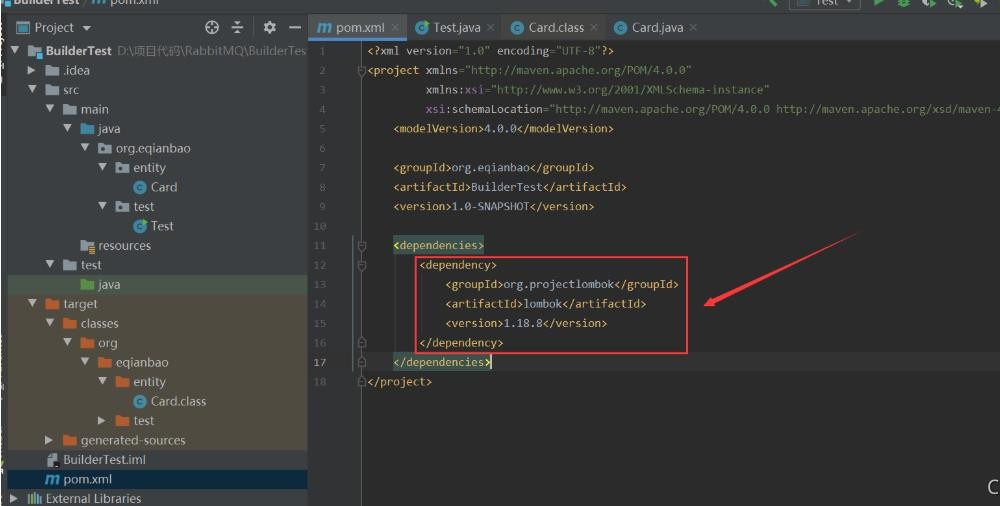
第二步我们需要给我们的实体类加上一个@Builder注解,如下图:
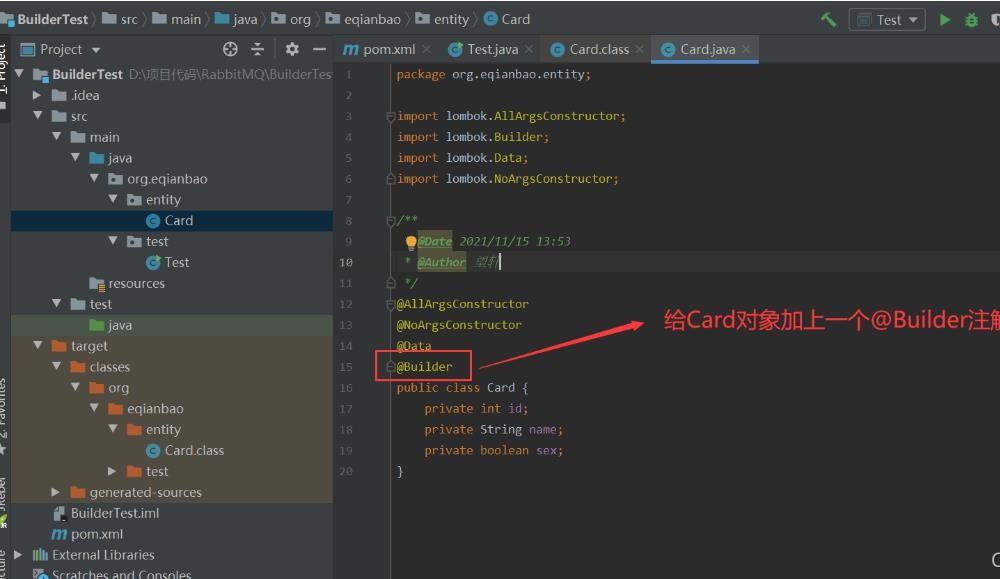
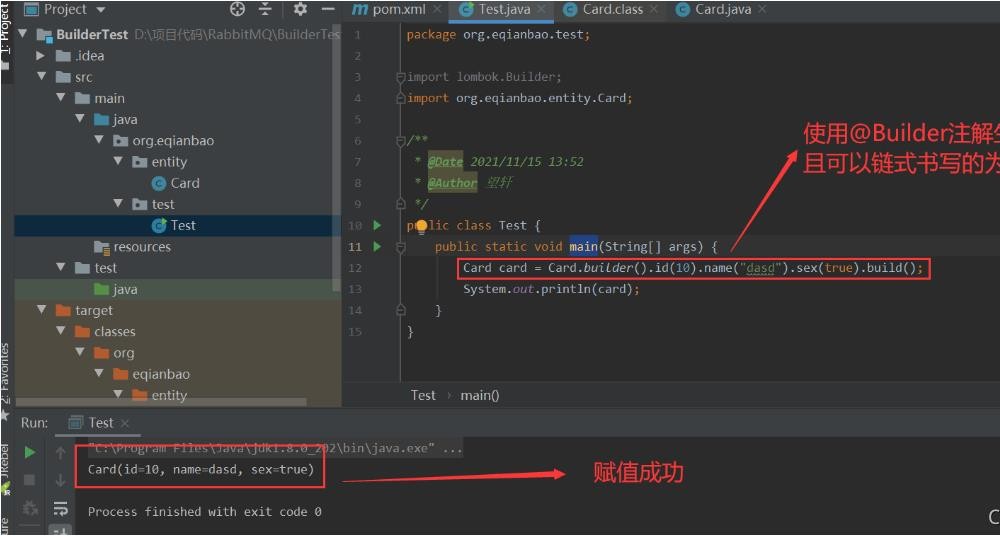
实体类加上@Builder注解之后,编译之后会多出一个builder()方法,和一个CardBuilder静态内部类,如下图:
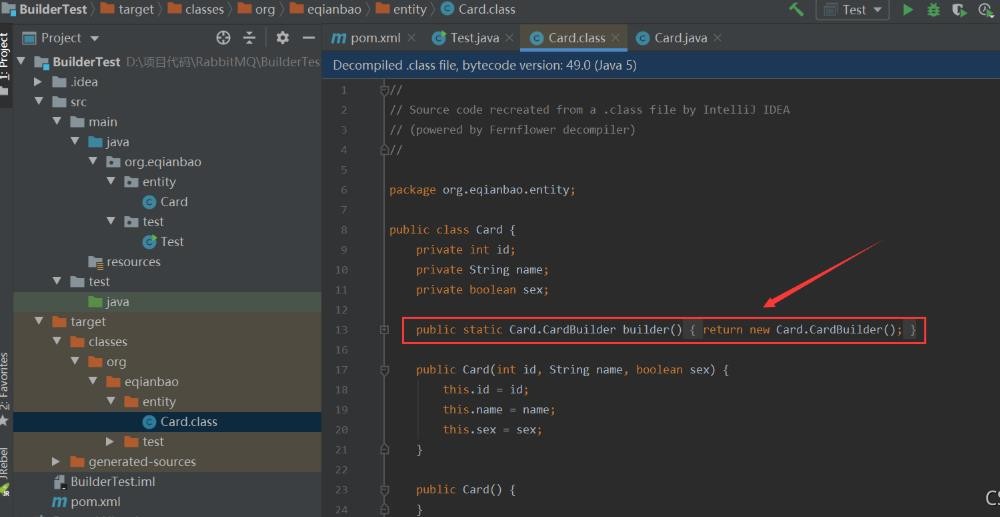
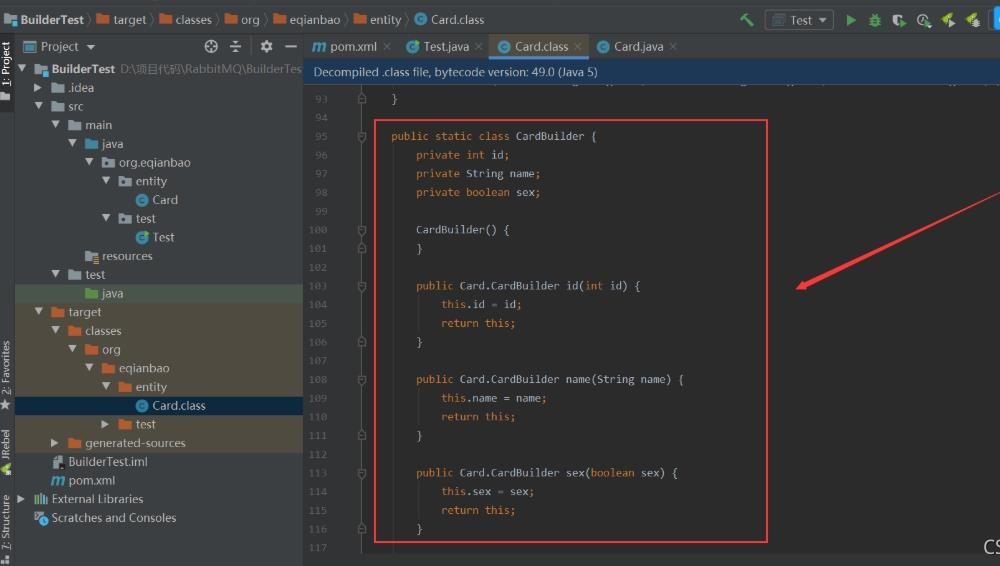
代码如下:
public class Card {
private int id;
private String name;
private boolean sex;
public static Card.CardBuilder builder() {
return new Card.CardBuilder();
}
public Card(int id, String name, boolean sex) {
this.id = id;
this.name = name;
this.sex = sex;
}
public Card() {
}
public int getId() {
return this.id;
}
public String getName() {
return this.name;
}
public boolean isSex() {
return this.sex;
}
public void setId(int id) {
this.id = id;
}
public void setName(String name) {
this.name = name;
}
public void setSex(boolean sex) {
this.sex = sex;
}
public boolean equals(Object o) {
if (o == this) {
return true;
} else if (!(o instanceof Card)) {
return false;
} else {
Card other = (Card)o;
if (!other.canEqual(this)) {
return false;
} else if (this.getId() != other.getId()) {
return false;
} else {
Object this$name = this.getName();
Object other$name = other.getName();
if (this$name == null) {
if (other$name == null) {
return this.isSex() == other.isSex();
}
} else if (this$name.equals(other$name)) {
return this.isSex() == other.isSex();
}
return false;
}
}
}
protected boolean canEqual(Object other) {
return other instanceof Card;
}
public int hashCode() {
int PRIME = true;
int result = 1;
int result = result * 59 + this.getId();
Object $name = this.getName();
result = result * 59 + ($name == null ? 43 : $name.hashCode());
result = result * 59 + (this.isSex() ? 79 : 97);
return result;
}
public String toString() {
return "Card(id=" + this.getId() + ", name=" + this.getName() + ", sex=" + this.isSex() + ")";
}
public static class CardBuilder {
private int id;
private String name;
private boolean sex;
CardBuilder() {
}
public Card.CardBuilder id(int id) {
this.id = id;
return this;
}
public Card.CardBuilder name(String name) {
this.name = name;
return this;
}
public Card.CardBuilder sex(boolean sex) {
this.sex = sex;
return this;
}
public Card build() {
return new Card(this.id, this.name, this.sex);
}
public String toString() {
return "Card.CardBuilder(id=" + this.id + ", name=" + this.name + ", sex=" + this.sex + ")";
}
}
}
到此这篇关于Lombok中的@Builder注解的使用的文章就介绍到这了,更多相关Lombok @Builder注解内容请搜索编程网以前的文章或继续浏览下面的相关文章希望大家以后多多支持编程网!
--结束END--
本文标题: 聊聊Lombok中的@Builder注解使用教程
本文链接: https://www.lsjlt.com/news/157554.html(转载时请注明来源链接)
有问题或投稿请发送至: 邮箱/279061341@qq.com QQ/279061341
下载Word文档到电脑,方便收藏和打印~
2024-03-01
2024-03-01
2024-03-01
2024-02-29
2024-02-29
2024-02-29
2024-02-29
2024-02-29
2024-02-29
2024-02-29
回答
回答
回答
回答
回答
回答
回答
回答
回答
回答
0